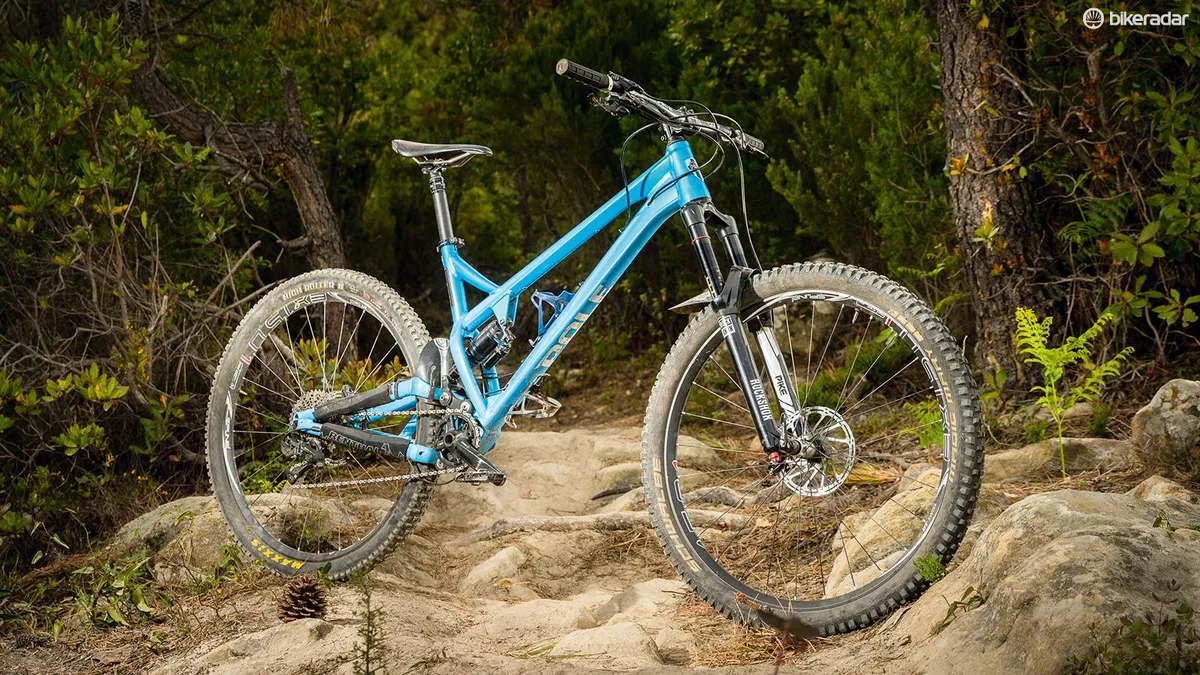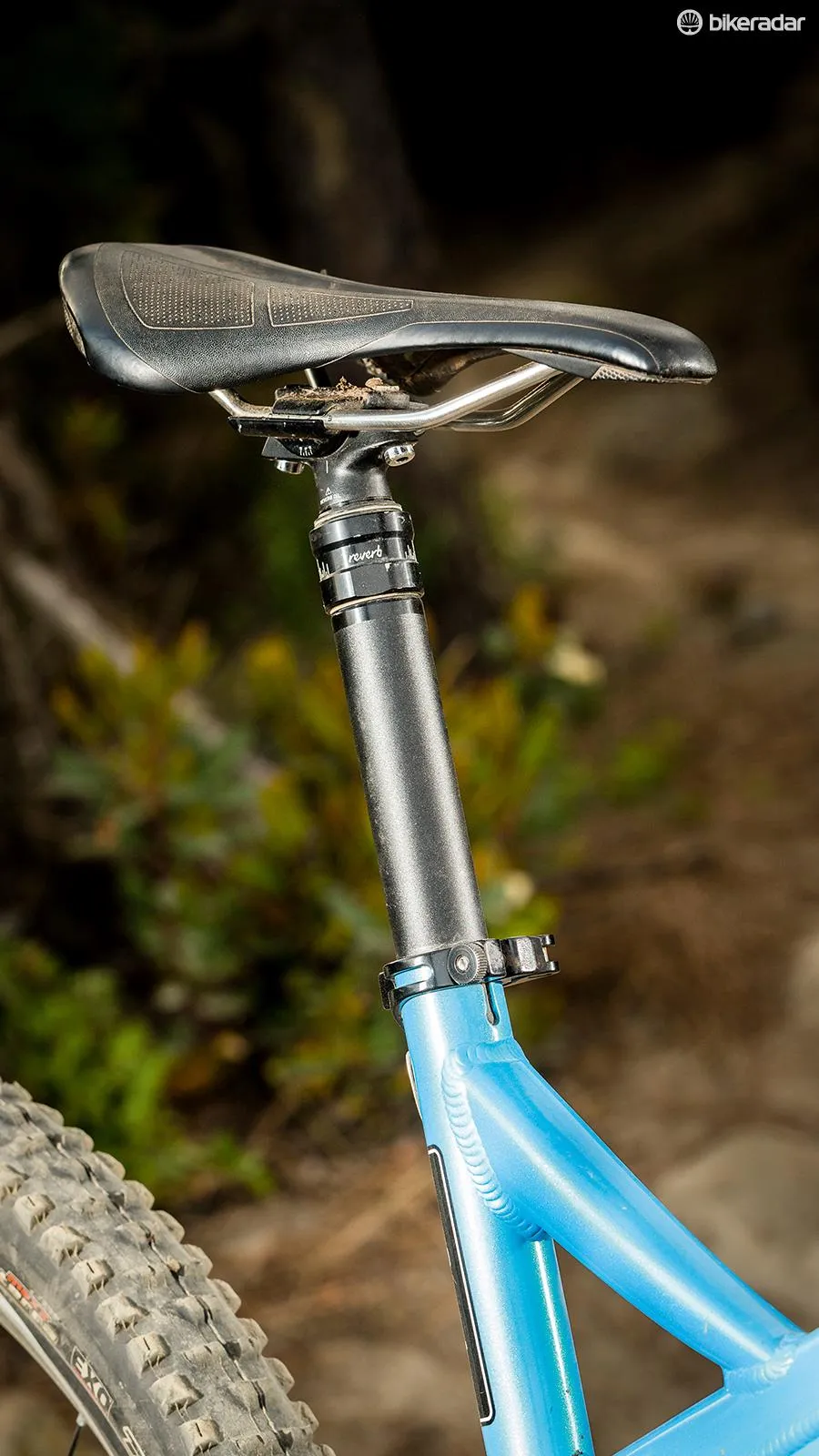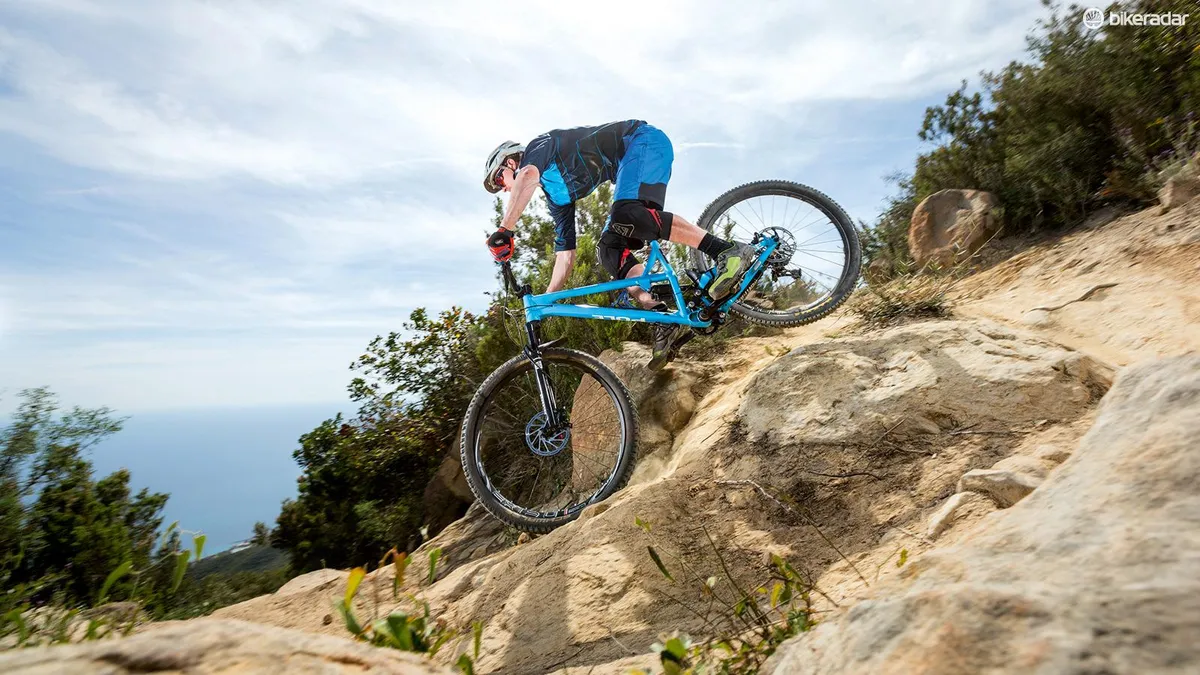‘Pole’ is Finnish for pedal, and we’ve been doing an awful lot of that on the Pole Evolink 140. It’s not often a test bike gets as much ride time as this one has endured — so why do we keep jumping aboard the thing? Well, in the first instance the 140 caught our attention by simple virtue of being the longest and slackest 29er out there. With a 1,310mm wheelbase, our size large is within a few millimetres of the Longest Mojo/Nicolai Geometron. Its chainstays are unfashionably elongated at 455mm; the 510mm reach is as long as an XL Mondraker Dune; and the head angle is super slack for a 29er, at 64.5 degrees.
The twin-link suspension design is interesting too. The lower link pivots around the bottom bracket, resulting in fairly low levels of chain growth, especially towards the end of the stroke. This means less pedal kickback and better sensitivity when hammering through rocks.
Normally, reduced chain growth means less pedal efficiency, but the Evolink actually pedals quite well thanks to a supportive mid-stroke in the leverage curve. A soft beginning third sticks you to the ground nicely, before it firms up after sag. We ended up running just one volume spacer in the shock to prevent the mid-stroke from becoming too firm — though this did cause us to bottom out occasionally.
Need for speed

With active suspension and long, slack geometry, the Evolink positively begs to be ridden fast. Letting off the brakes is key to getting the most out of it, as is leaning forward to weight the front wheel. The slack fork and short stem (35mm) mean a conscious effort is required to keep pressure on the front wheel, especially on flatter ground. This takes practice, and we experimented with a longer 40-50mm stem to bring the weight balance forwards. Once you have the knack though, this bike rips — especially in rough, steep terrain, where the balance is perfect. The slack head angle keeps the front end remarkably unfazed by random rocks, and the long chainstays do a similar job with the rear — boosting predictability and calmness when loose terrain conspires to knock the Pole offline.
Partly because of those longer chainstays, it’s not the keenest bike to manual, but it’s totally possible with practice. Similarly, it’s not the easiest to get round really tight switchbacks, though they’re always achievable with the right technique. Lift, skid or hop the rear wheel, and even the most hairpin of bends can be negotiated without too much time penalty.

We found ourselves running tight corners wide at first, but once used to the geometry, we learned to compensate and fully commit to the turns. The slack head angle helps you tip the front end into steep corners, and makes it easier to hold a line once you’re committed to the turn.
The chainstays do flex noticeably when fired really hard into bike-park berms. We found this a tad disconcerting at first, but it’s not necessarily a bad thing. This flex seems to boost traction and predictability over loose rocks and off-camber sections, and helps the Evolink to turn more tightly, though it also makes it feel slightly lazy when snapping through grippy turns or sprinting. As a bonus, there’s enough room between the ’stays for 27.5+ rubber.
Climbing capabilities
At 77.5 degrees, the effective seat angle is as steep as any you’ll find. Combined with the chainstay length, this counteracts the wheelie effect when tackling steep climbs, cutting strain on your arms and hamstrings. It also means you’re sat further from the rear axle, isolating you from bumps for a smoother, more efficient ride.
When combined with a roomy reach and supportive suspension, this makes the Evolink among the most capable and comfiest steep, technical-climbing bikes we’ve tested — the slack head angle simply doesn’t cause problems. It’s all about that seat angle. With a weight figure of 31.5lbs, it is a surprisingly effortless cross-country mile-muncher too, able to negotiate flatter terrain rapidly and comfortably.

Although we had some issues with the stock MRP Stage fork, the spec list is pretty solid and well chosen, albeit hardly bling for the money. We’ve ridden ours so often and so hard that the drivetrain and bottom bracket are simply worn out, and we’re well into our third set of brake pads. Still, the frame has held up well save a scuffed chainstay and some slightly ropey pivot bearings. We’d call that a pretty good innings.
The Pole isn’t perfect. We wish the 348mm bottom bracket was a bit lower when riding steep, twisty terrain, and we wish the suspension’s support continued to the end to prevent bottom-out without making the mid-stroke too firm. Nevertheless, despite access to all the latest and greatest bikes, this has been our tester’s weekend weapon of choice for months now. And really, that says it all.
Seb rode the Pole Evolink 140 for a first ride video shot earlier this year




